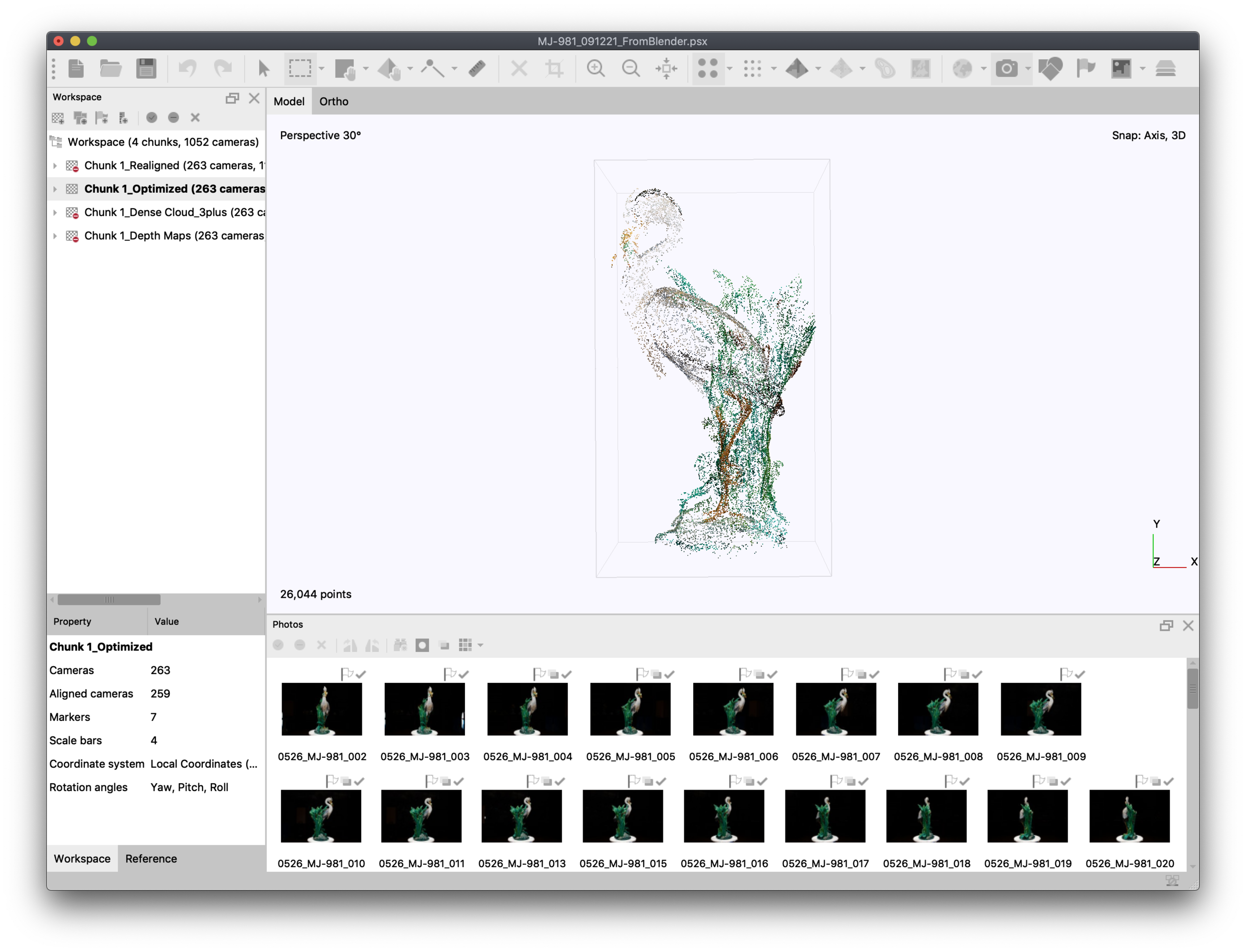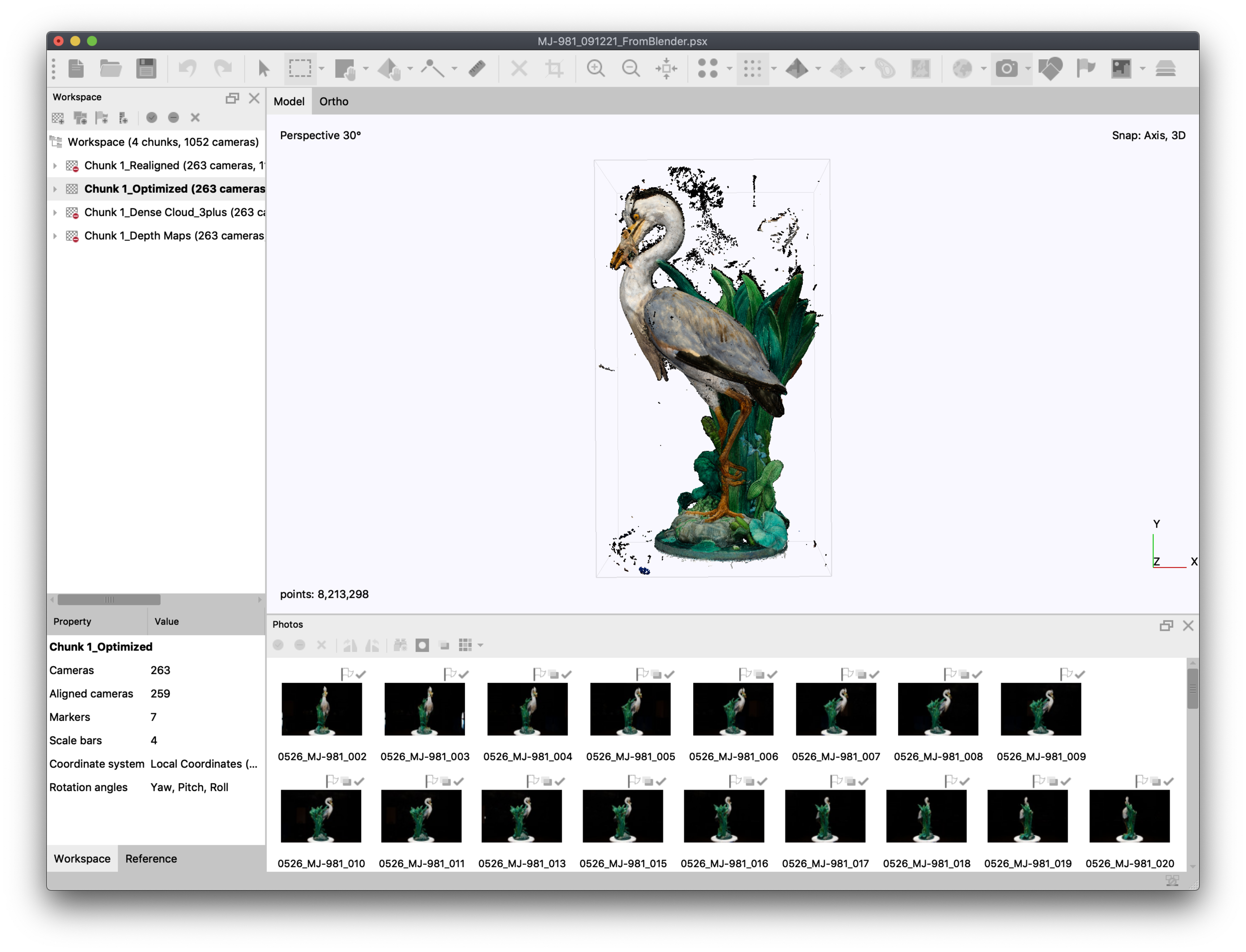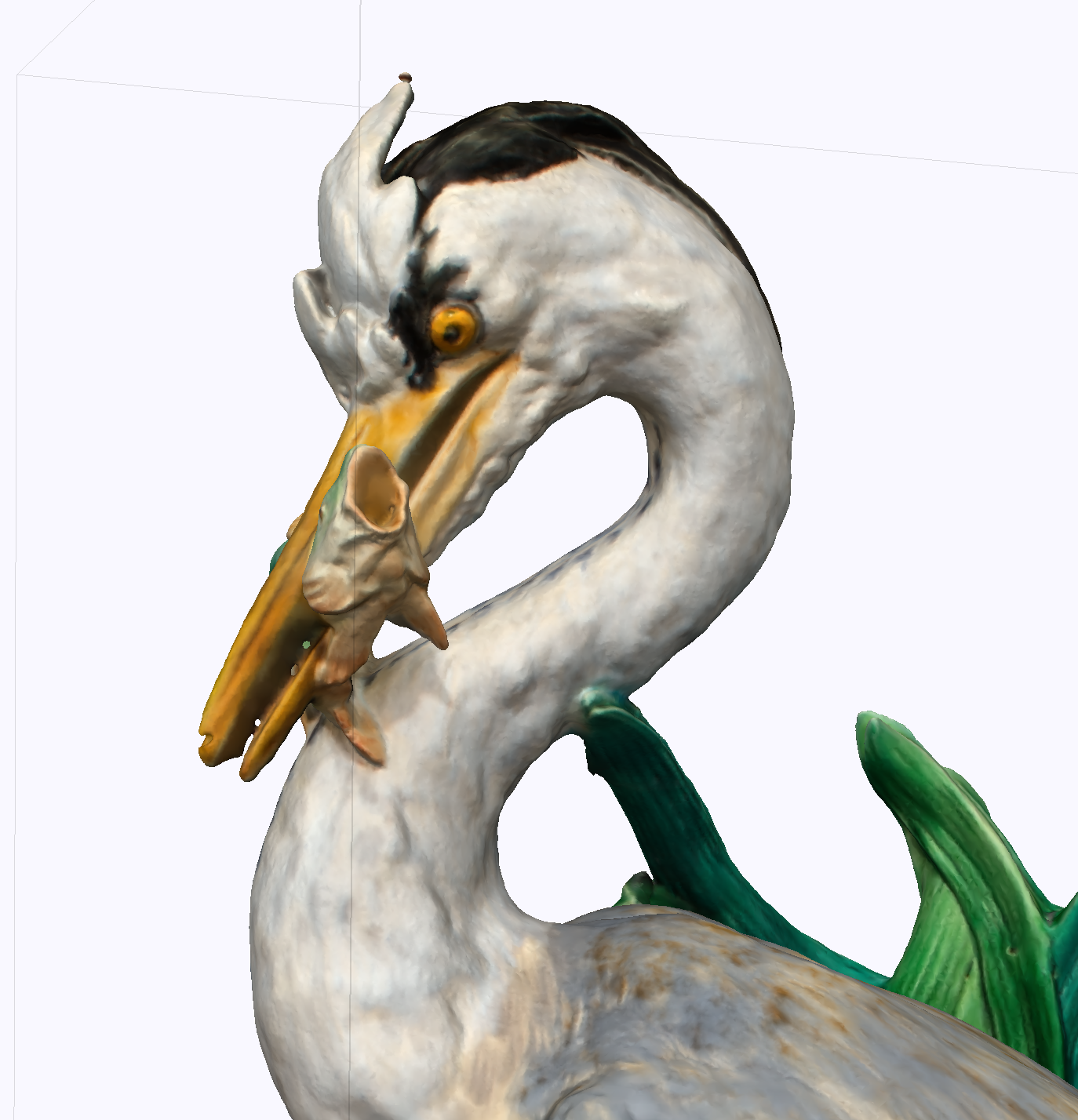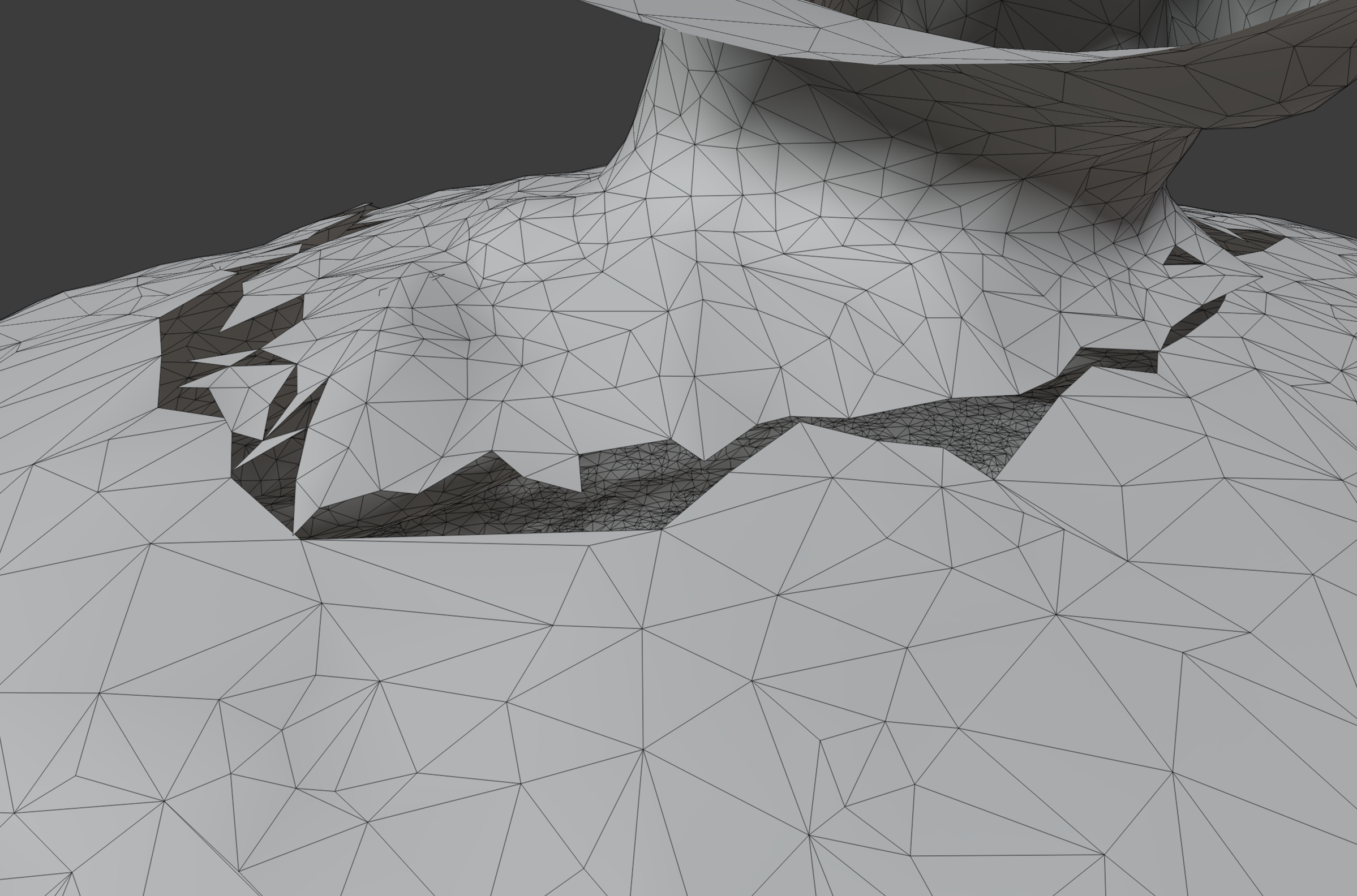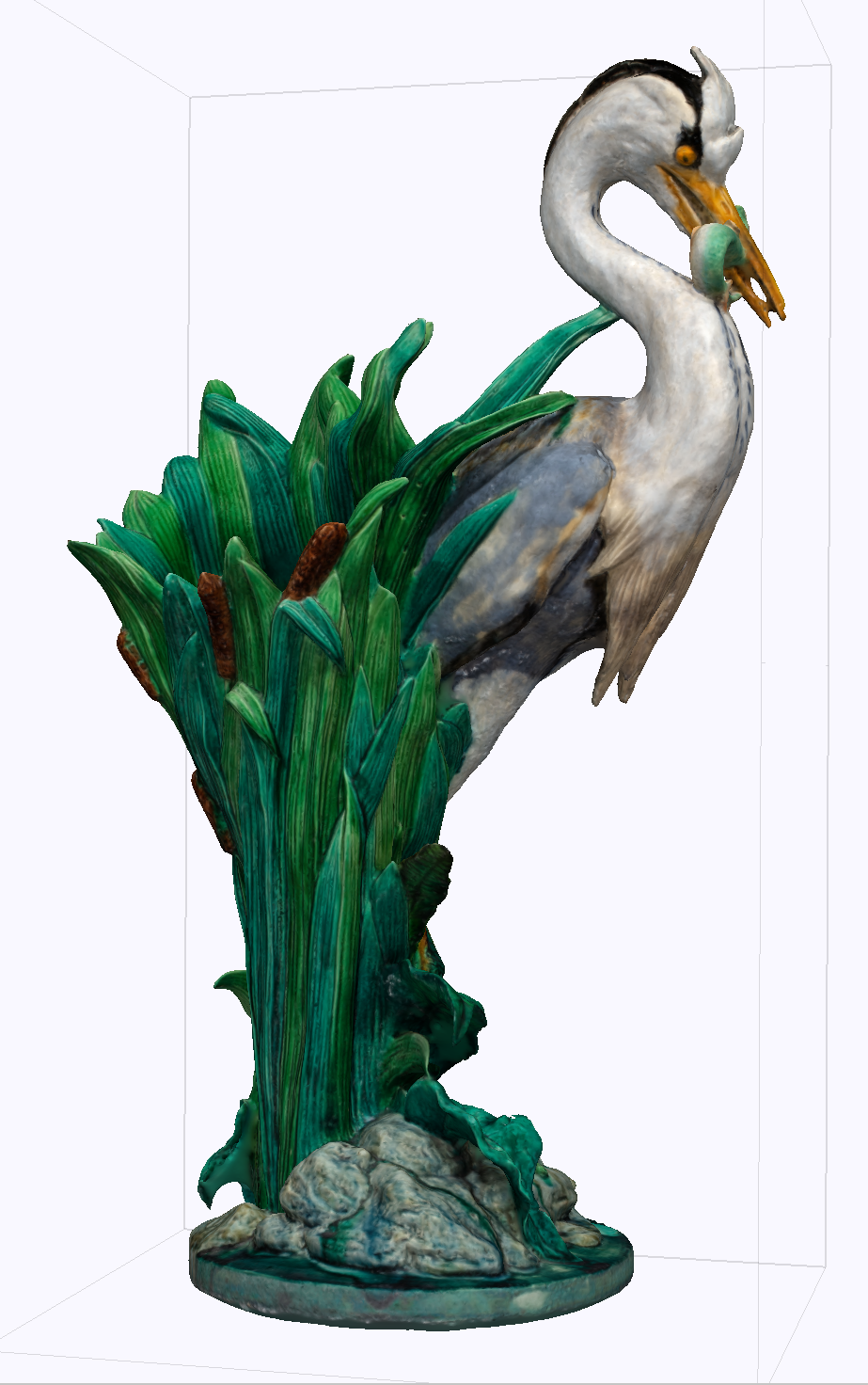Photogrammetry for Bard Graduate Center exhibition, Majolica Mania: Transatlantic Pottery in England and the United States, 1850–1915 (2021)
Twelve objects from the exhibition are featured on an accompanying website to increase accessibility for virtual attendees and allow viewing of the objects’ designs in the round. Chosen by curators, many of the objects were not well-suited to the photogrammetry process due because they have movable parts, are reflective, and are deep vessels. These challenges often resulted in poor software processing (Metashape) that required additional manual editing and re-texturing.
Workflow:
The process begins by taking a series of digital photographs of each object with a high-quality camera and a fixed lens. The camera must capture at least three views of each point on the object in order for it to be included in the 3D model, and the resulting image set for each object can contain hundreds of photographs. Specialized software called Metashape then interprets this image set to generate the first iteration of the 3D model. First, the program analyzes and compares the pixels in every image in the set to identify those points that belong to the object and those that are part of the background. This process yields a “sparse cloud” of the most likely points to comprise the final model, which is then refined over several additional steps to create a “dense cloud.” Based on those points (or based on depth maps derived from an analysis of the image set), a fine mesh of geometric shapes is then created to generate a “solid” form. The mesh often needs to be manually edited in Blender, an open-source 3D-modeling software, to correct the areas where Metashape was unable to accurately interpret the image set. Once those corrections are made, the edited mesh is imported back into Metashape where the model’s “texture” is created using the original image set. This final texture is a composite image drawn from colors of the original object mapped onto the mesh. The final 3D model is then uploaded to a viewing platform where environmental variables like background color and lighting can be adjusted so as to create a faithful representation of the original object.
Photographing an object
Sparse cloud in Metashape
Dense cloud in Metashape
Unedited solid mesh in Metashape
Unedited, textured model in Metashape
Detail of unedited, textured model in Metashape
Mesh detail in Blender
Editing mesh artifacts in Blender
Editing mesh artifacts in Blender
Edited model, retextured in Metashape

